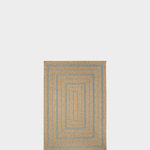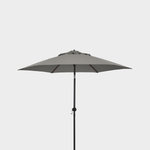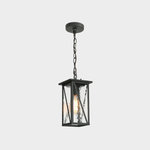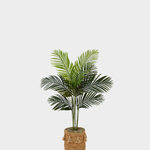Gardening Guides
Edible Gardens
How to Prune Your Fruit Trees in Winter
Garden chores may slow down this season, but pruning your fruit trees now means healthier plants that will produce more
We all look forward to seeing our fruit trees laden with sweet fruit in the warmer months of the year, but without proper pruning in winter, the quality and amount of fruit produced may be disappointing. Pruning and selectively removing branches are also vital parts of keeping your tree healthy, while also enabling it to produce delicious fruit.
Winter is the best time to prune, when the trees are dormant and leafless. This also allows you to see your tree’s natural shape, which isn’t always the best for fruit production. Proper pruning and shaping annually will keep it producing good-quality fruit. (It’s important to note that we are referring to fruit trees like apple, apricot, cherry, peach, plum or any other fruit tree that loses its leaves in winter.)
Winter is the best time to prune, when the trees are dormant and leafless. This also allows you to see your tree’s natural shape, which isn’t always the best for fruit production. Proper pruning and shaping annually will keep it producing good-quality fruit. (It’s important to note that we are referring to fruit trees like apple, apricot, cherry, peach, plum or any other fruit tree that loses its leaves in winter.)
Crossing branches are pruned away.
Why Prune Fruit Trees
Why Prune Fruit Trees
- Opens up interior branches to more sunlight, which is essential for fruit production.
- Eliminates certain non-productive branches, leaving more resources available for the branches that produce fruit.
- Stimulates vigorous growth from existing buds.
- Encourages strong branching and removes weak branches susceptible to breaking.
- Promotes good air circulation, which reduces the incidence of disease.
- Removes dead and diseased growth that can adversely affect the tree.
An apple tree in an Arizona garden is seen before pruning in January.
When to Prune Fruit Trees
Fruit trees in USDA Zone 6 and below should be pruned in late winter while those in Zone 7 and above can be done in early winter (find your zone). In general, you can prune when the trees are dormant and have lost their leaves. Those grown in warmer regions may still have a few leaves remaining, but you can begin pruning as long as it is winter.
When to Prune Fruit Trees
Fruit trees in USDA Zone 6 and below should be pruned in late winter while those in Zone 7 and above can be done in early winter (find your zone). In general, you can prune when the trees are dormant and have lost their leaves. Those grown in warmer regions may still have a few leaves remaining, but you can begin pruning as long as it is winter.
Tools Need for Pruning
You don’t need fancy tools, and the ones required can be used for other pruning jobs in the garden. You’ll need a pair of long-handled loppers, a pruning saw, hand pruners and a pole saw. (Shown in this photo from left to right; pole saws are only if you have tall fruit trees that you can’t reach with the other pruning tools.) All of your pruning implements should have sharp blades, which make clean pruning cuts that help your tree heal more quickly.
Shop for pruning tools on Houzz
You don’t need fancy tools, and the ones required can be used for other pruning jobs in the garden. You’ll need a pair of long-handled loppers, a pruning saw, hand pruners and a pole saw. (Shown in this photo from left to right; pole saws are only if you have tall fruit trees that you can’t reach with the other pruning tools.) All of your pruning implements should have sharp blades, which make clean pruning cuts that help your tree heal more quickly.
Shop for pruning tools on Houzz
A recently pruned apple tree is shown with its branches pruned back to the trunk.
How to Prune Fruit Trees
1. Remove any broken, dead or diseased branches. Look for any branches that are crossing or rubbing against each other, keeping the biggest branch. It’s important to prune all the way to a healthy larger branch — don’t leave any “stubs” behind, like the one seen in the following photo.
How to Prune Fruit Trees
1. Remove any broken, dead or diseased branches. Look for any branches that are crossing or rubbing against each other, keeping the biggest branch. It’s important to prune all the way to a healthy larger branch — don’t leave any “stubs” behind, like the one seen in the following photo.
The top branch has been pruned back incorrectly, leaving a “stub,” which makes it hard for the tree to heal and provides an entry for rot. Even if the stub is old, go ahead and remove it. The lower branch shows the right way to prune: up to the branch collar, which is the circular tissue that surrounds branches.
An apple tree after pruning
2. Look for and prune out any vertical branches that are growing from more horizontal branches, as they rarely produce any fruit. Also, remove any branches that are growing downward as well as any branches growing from the base of the tree.
3. The next step involves “thinning,” which removes excess branches and leaves the most vigorous ones. Strong branch attachment is important when trees are heavily laden with fruit — branches with a narrow angle of attachment and those that are almost horizontal risk breakage. A good rule of thumb is to keep branches that are at 10 or 2 o’clock angles from the trunk.
Create a 8- to 12-inch-diameter open space around each well-attached branch, free of other competing branches. This may mean removing another healthy branch if there are two growing too closely together. The goal is to have a tree with evenly spaced branches.
2. Look for and prune out any vertical branches that are growing from more horizontal branches, as they rarely produce any fruit. Also, remove any branches that are growing downward as well as any branches growing from the base of the tree.
3. The next step involves “thinning,” which removes excess branches and leaves the most vigorous ones. Strong branch attachment is important when trees are heavily laden with fruit — branches with a narrow angle of attachment and those that are almost horizontal risk breakage. A good rule of thumb is to keep branches that are at 10 or 2 o’clock angles from the trunk.
Create a 8- to 12-inch-diameter open space around each well-attached branch, free of other competing branches. This may mean removing another healthy branch if there are two growing too closely together. The goal is to have a tree with evenly spaced branches.
4. This part of tree pruning consists of “heading back,” which removes a percentage of the previous year’s outer growth. This helps to stimulate nearby buds to produce new branches and, therefore, more fruit. This type of pruning is done using hand pruners.
A bud scale scar is seen on the lower left side of this small branch, or stem. This raised circular area marks the start of the previous year’s growth, which extends to the tip of the branch. The other raised areas along the stem are leaf scars, from which new buds will emerge.
Before pruning, it’s important to determine how much each tree branch grew in the previous growing season. You can do this by looking for a raised circular area around each branch, located near its tip, which signifies the section of growth that occurred in that year. This bud scale scar, as it is called, can be found anywhere from 4 inches from the tip of the branch to 4 feet down. Once you have found the circular area, make your pruning cut about 25 percent of the way from the tip of the branch to that raised area, removing a quarter of last year’s growth.
Before pruning, it’s important to determine how much each tree branch grew in the previous growing season. You can do this by looking for a raised circular area around each branch, located near its tip, which signifies the section of growth that occurred in that year. This bud scale scar, as it is called, can be found anywhere from 4 inches from the tip of the branch to 4 feet down. Once you have found the circular area, make your pruning cut about 25 percent of the way from the tip of the branch to that raised area, removing a quarter of last year’s growth.
For these heading cuts, prune back to one-quarter inch above a new bud that faces outward whenever possible.
5. Clean up all pruned branches and dispose of them. Avoid using them in compost, as they may harbor damaging insects or disease that can spread to other plants.
Shortly after pruning, delicate flowers will appear, decorating your tree and signaling the coming of spring.
Tip: Don’t worry if you prune too much or too little. Most fruit trees are extremely forgiving and will respond favorably in most cases. Even if your fruit trees have been neglected for several years, following these pruning tips will help to revitalize them.
More on Houzz
How to Plant a Fruit Tree
Get a Head Start on Planning Your Garden, Even if It’s Snowing
Find a landscape designer near you
Shop for gardening tools
Shortly after pruning, delicate flowers will appear, decorating your tree and signaling the coming of spring.
Tip: Don’t worry if you prune too much or too little. Most fruit trees are extremely forgiving and will respond favorably in most cases. Even if your fruit trees have been neglected for several years, following these pruning tips will help to revitalize them.
More on Houzz
How to Plant a Fruit Tree
Get a Head Start on Planning Your Garden, Even if It’s Snowing
Find a landscape designer near you
Shop for gardening tools



















Find a tree pruning pro on Houzz